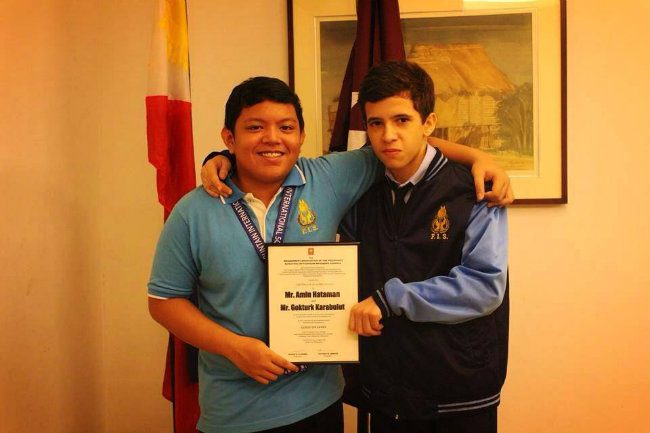SUMMARY
This is AI generated summarization, which may have errors. For context, always refer to the full article.

MANILA, Philippines — A 15-year-old boy may have just found a way to solve our plastic woes.
Ahmet Hataman, a student at the Fountain International School (FIS), won bronze for his project entitled, “Feasibility Study of Using Nata de Coco as Material For Biodegradable Plastic.”
His project was recognized earlier this year during the 2015 I-SWEEP or the International Sustainable World (Energy, Engineering, and Environment) Project, the world’s largest science fair of its kind.
I-SWEEP aims to “create a collaborative yet competitive environment” in which high school students can share their solutions to society’s challenges.
Joining Hataman is his classmate, Memduh Karabulut. The science fair gathered some of the brightest young minds across different regions, from Peru to South Korea, the US to Senegal, Italy to Angola, among many others.
Hataman and Karabulut won under the environment-management and pollution category.
Meanwhile, other Philippine representatives joined the science fair and received honorary mentions:
-
John Edward Cayas, Althea Arnoco, and Roxanne Reyes for their project, “Herbal Enthusiasts’ Robot Buddy.”
-
Shelley Sundae Naparota and Christine Senan Pechay for their project, “The efficiency of Mayana, Bangka‐bangkaan, and Acacia leaf extracts as sensitizers for dye‐sensitized solar cells.”
- Michael Andrei Sameon and Glebonie Canono for his project, “Okra for blood coagulation.”
In 2014, Hataman also presented the same project to the Management Association of the Philippines. The project was commended by the AgriBusiness and Countryside Development Foundation, according to the FIS.
In FIS, Hataman’s school, a “modular approach to learning is used especially in science and math to ensure effective and in-depth learning.”
PH science, math
While students like Hataman bring pride to the Philippines, other students are not given as much opportunity.
Results of the country’s yearly-administered National Achievement Test (NAT) are quite dismaying, according to a United Nations Development Program report.
In 2006, only 25.3% of schools nationwide reached the desired 75% cut-off score in mathematics. In science, it was only 8.6%. NAT scores below 50% indicate a low mastery of the subject.
Worldwide, the Philippines ranked 41st in science and 42nd in math among 45 countries in the 2003 Trends in International Mathematics and Science Study (TIMSS), an international assessment of skills among primary and secondary school students.
The Philippines has not improved its ranking since 1999 and did not participate in the 2007 and 2011 TIMSS.
Until then, students like Hataman could inspire other students, as well as teachers to strive better, continue learning, and to beat the odds. – Rappler.com
Add a comment
How does this make you feel?
There are no comments yet. Add your comment to start the conversation.